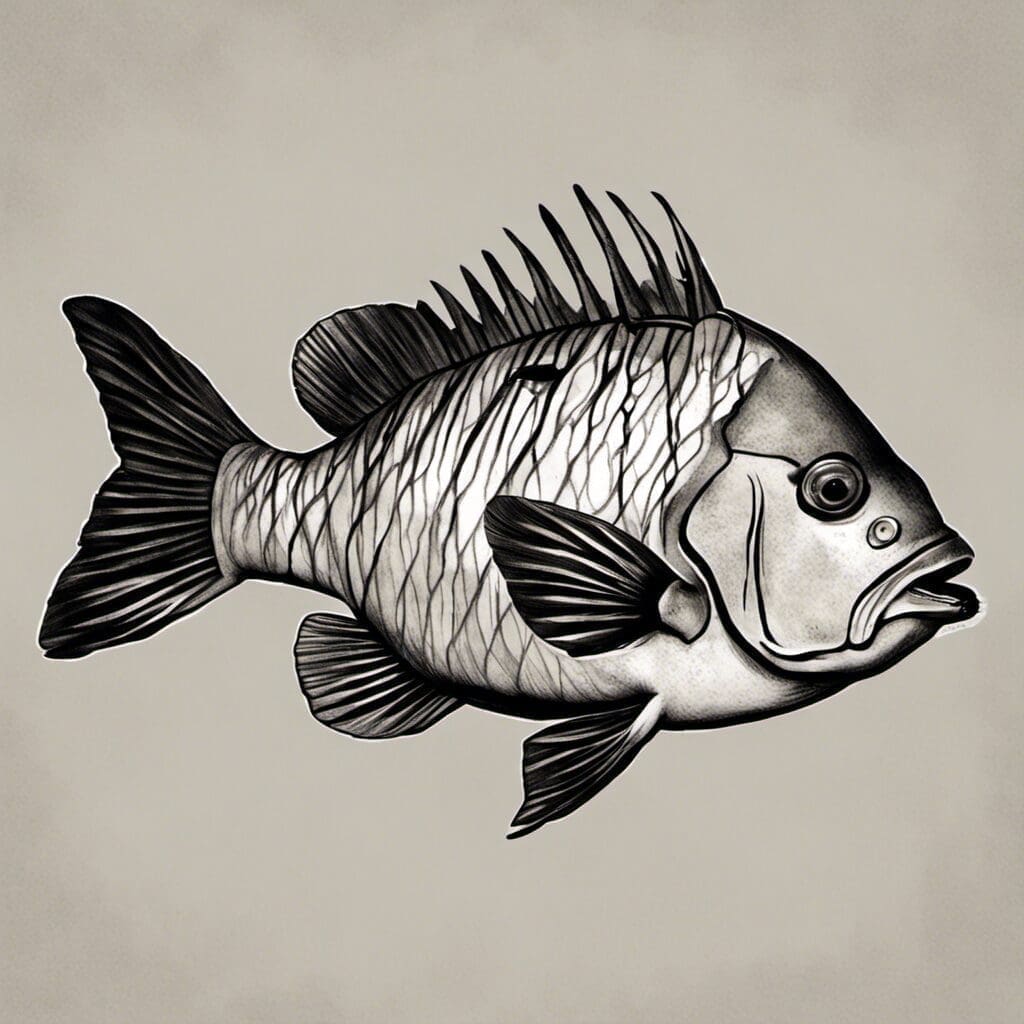Introduction
The Sheepshead (Archosargus probatocephalus) is a fascinating marine fish that belongs to the Sparidae family.
Conservation Status
As per the International Union for Conservation of Nature (IUCN), the Sheepshead is classified under the “Least Concern” category. This implies that it’s quite common and there aren’t any significant concerns about its extinction. Nonetheless, sustainable fishing practices are promoted to maintain the population.
Statistics
| Length (Average) | Length (Range) | Weight (Average) | Weight (Range) | Average Lifespan |
|---|---|---|---|---|
| 30-50 cm | 15-76 cm | 2-3 kg | 1-9 kg | 20 years |
Distribution
The Sheepshead arer found primarily along the Gulf and Atlantic coasts of the United States, with particular concentration in the areas from North Carolina to Texas. They do not show significant migration patterns, tending to stay in the same areas throughout their lives.
Habitats
They are usually found in brackish waters such as mangroves and marshes, as well as in reefs and piers. They prefer depth range between 1 and 20 meters. They adapt well to a wide range of temperature levels but thrive best in waters with temperatures of 26 – 30°C.
When and Where to See
The optimal season to see Sheepshead is the late winter and early spring, including February and March. They are more active during the day, especially around sunrise and sunset.
Best Fishing Locations
Some of the best fishing locations for Sheepshead include:
- St. Augustine, Florida
- Corpus Christi, Texas
- Mobile Bay, Alabama
- Gulf Shores, Alabama
- Venice, Louisiana
- Charleston, South Carolina
- Morehead City, North Carolina
- Tampa Bay, Florida
- Myrtle Beach, South Carolina
How to Catch
Sheepshead are notorious bait stealers, so strong hooks and sturdy equipment are recommended. Using fiddler crabs, barnacles, or shrimp as bait is quite effective. Bottom fishing is the preferred method when trying to catch Sheepshead. The best time to catch this species is in late winter and early spring, especially in February and March.
Identification Guide
Sheepshead are typically grey with 5 or 6 dark bars running down the length of their body, giving them a striped appearance. They have a sturdy body, a rounded dorsal fin, and a heavily toothed mouth that looks surprisingly similar to human teeth. This species is quite distinct and hard to confuse with other fish.
Culinary
Sheepshead is quite a delicacy, known for its mild, sweet flavor and firm texture. They have low-fat content and are packed with healthy omega-3 fatty acids. Popular ways to prepare Sheepshead include grilling, pan-frying, or baking. One popular recipe is Blackened Sheepshead with a dab of melted butter and lemon juice.
Additional Information
Sheepshead are omnivores, their unique set of teeth helps them crush the shells of the crustaceans and mollusks they prefer to eat. They’re usually solitary but might gather in large groups during their breeding season. Their natural predators include sharks, larger fish, and dolphins. Overfishing can threaten their population.
References and Further Reading
Florida Fish and Wildlife Conservation Commission
Texas Parks & Wildlife Department

